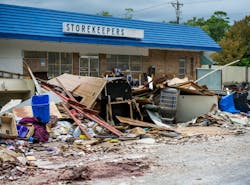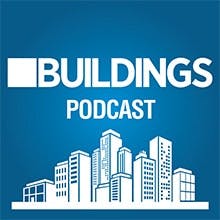Importance of Immediate Occupancy in Buildings After Disasters
When a natural disaster strikes a building, it can cripple it in unexpected ways. Such hazards as flood water, power outages, broken windows and other severe damage might make the building unfit to live or work in for weeks or even months – affecting not just the individual building’s performance but the community in which it resides.
With direction from the U.S. Congress, the National Institute of Standards and Technology (NIST) released a preliminary report on the idea of immediate occupancy: when residential and commercial buildings are quickly able to provide shelter and continue functioning post-event.
NIST Report on Immediate Occupancy
The purpose of NIST’s report was to inform a research plan identifying what the key needs are to achieve this goal.
“I think it was very helpful to talk through the entire process from building design to assessing a building after an event,” says Terri McAllister, community resilience group leader and program manager at NIST.
“That’s probably one of the big challenge areas that emerged. How do you go about assessing a building rapidly so that it’s considered immediately occupiable? If there’s damage, you often have to wait for someone to come and inspect the building. And then for any permit to be issued, if repairs need to be made, it can take weeks to months after an event. We think that’s going to be a big challenge moving forward,” McAllister continues.
The four primary research topics the report identifies as important to achieving immediate occupancy are:
- Building design
- Community considerations
- Economic and social considerations
- Acceptance and adoption considerations
The report includes economic and social considerations at a community scale, especially if the building damaged is a business or related to education or government. Natural hazard events can affect a community “through loss of life, injury, property damage, displacement of residents and businesses and long-lasting economic and social impacts.”
Investigating Irma
Hurricane Irma was the costliest storm in Florida’s history and devastated the U.S. Virgin Islands. The investigative teams examining both places after the storm discovered design issues that have wide-ranging implications for building codes and design strategies. Learn what did and didn’t stand up to the storm with structural engineer William L. Coulbourne.
[podcast]
The report states that “by ensuring access to housing and resumption of local businesses following a hazard event, communities can use [immediate occupancy] buildings to mitigate and recover from natural hazards and to reduce vulnerability and long-term negative consequences.”
What This Means Moving Forward
McAllister says this report should motivate building owners and facilities managers to think more broadly about their role in the community, not just individual performance.
“They can do things that go beyond the minimum requirements of codes and standards that can greatly improve the performance of their building,” McAllister says. “This can help open up a conversation with the people that can help them back those kinds of decisions and think about operating at a higher level.”
[Related: Duty of Care Obligations for Building Owners & Managers]
Since the release of the report, lead author and NIST research structural engineer Siamak Sattar says he has received much praise from young researchers. “They come to me and talk to me about this report and have found that it provides useful information for them to complete research proposals and ideas for future research.”
According to the report, increasing the performance goals for buildings isn’t something that can be easily achieved, but the advantages could be substantial. It would require engagement from both the private and public sector, as well as the community as a whole.
McAllister adds, “This is a perspective that’s really gaining traction – the idea of resilience as well as performance.
Two handpicked articles to read next:
About the Author

Sarah Kloepple
Associate Editor
Sarah joined the BUILDINGS team as an associate editor in August 2018. She is a graduate of the Missouri School of Journalism, where her focus was magazine writing. She's written and edited for numerous publications in her hometown of St. Louis.

